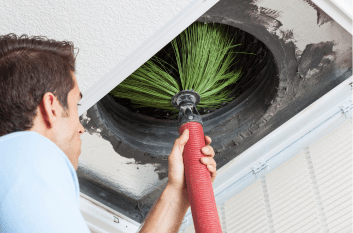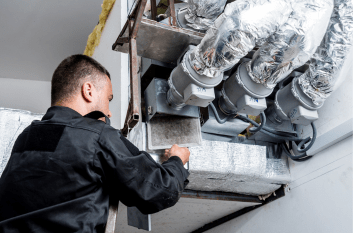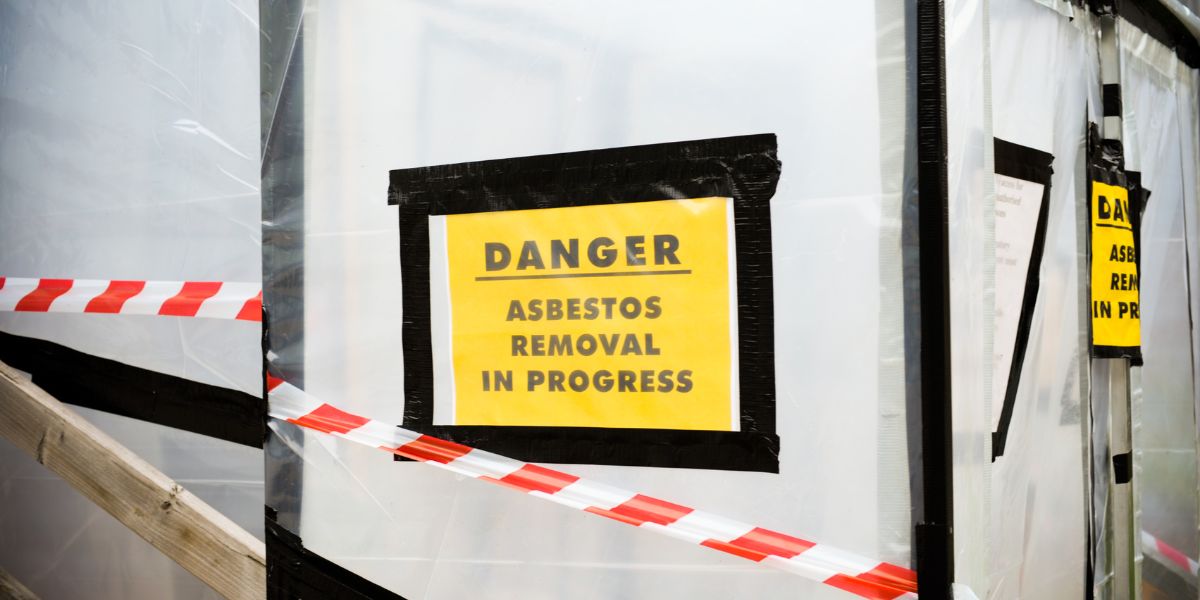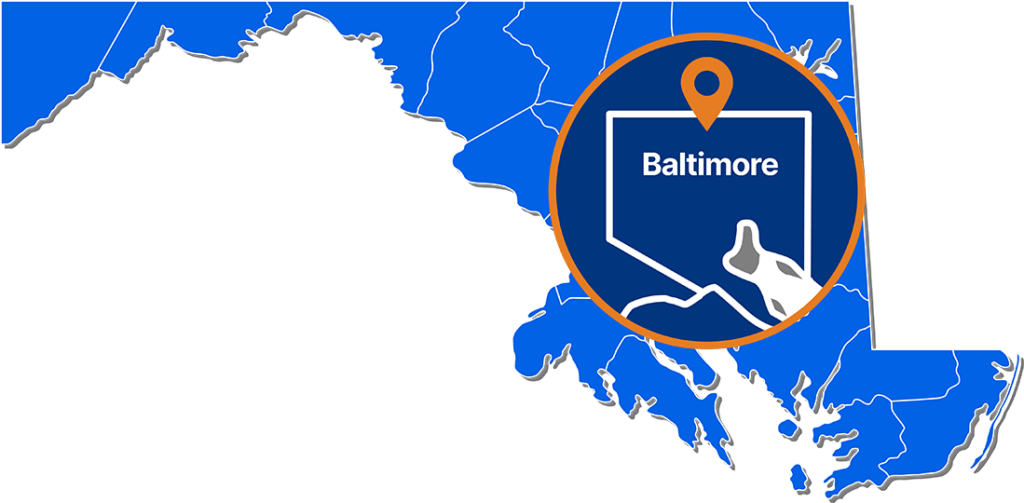Mold growth is a common household concern, and when it develops beneath hardwood floors, it can be particularly problematic. We will explore the key indicators that may suggest the presence of mold beneath your hardwood flooring. Identifying these signs early on can help you take timely action and prevent potential health hazards and structural damage. Let’s delve into the telltale signs that you should watch out for, so you can know if you need to call a water damage restoration company!

Causes of Mold Under Hardwood Floors
Mold growth under hardwood floors can occur due to various factors that create a conducive environment for its development. Understanding these causes is crucial in effectively preventing and dealing with mold issues. Here are the primary reasons why mold may thrive under hardwood floors:
Excess Moisture
Moisture is the leading cause of mold growth. When water seeps into the subfloor or between hardwood planks, it creates a damp environment ideal for mold to flourish. Common sources of excess moisture include leaks, spills, high humidity levels, or inadequate ventilation.
Water Damage
Previous water damage, whether from floods, plumbing leaks, or roof leaks, can leave residual moisture in the subfloor and hardwood, providing a breeding ground for mold. In some cases, even minor, unnoticed leaks over time can lead to significant mold growth.
Poor Ventilation
In areas with inadequate airflow, moisture can become trapped beneath the hardwood flooring. Poor ventilation prevents proper evaporation and drying, promoting a damp environment that encourages mold growth.
High Humidity
Regions with consistently high humidity levels are more prone to mold growth. Humid air can penetrate into the subfloor and condense beneath the cooler hardwood, creating conditions favorable for mold development.
Lack of Vapor Barrier
A vapor barrier is a vital protective layer between the subfloor and hardwood flooring. Without it, moisture from the subfloor can permeate upwards, leading to mold growth and damage to the hardwood over time.
Poor Installation or Maintenance
Improper installation or inadequate maintenance of hardwood floors can lead to gaps or cracks, allowing moisture to penetrate and accumulate underneath. Additionally, if spills or water incidents are not promptly addressed, mold growth may result.
Capillary Action
Capillary action occurs when moisture travels upward through porous materials like concrete or wood. If the subfloor material is porous and carries moisture, it can draw water upwards into the hardwood, fostering mold growth.
To prevent mold under hardwood floors, it’s essential to address the root causes and promptly deal with any water-related issues. Regular inspections, timely repairs, and maintaining a dry and well-ventilated environment can significantly reduce the risk of mold growth beneath your hardwood flooring.

Top 5 Signs of Mold Under Hardwood Floors
Musty Odor
One of the first indications of mold under hardwood floors is a persistent musty smell. If you notice an unpleasant and lingering odor, especially in areas close to the floor, it could be a sign of mold growth. Don’t ignore this warning sign as mold often releases distinct, earthy odors.
Discoloration or Stains
Keep an eye out for any unusual stains or discoloration on the hardwood surface. Dark or black spots may appear, indicating moisture has seeped into the wood, creating a favorable environment for mold to thrive. Be cautious of any unexplained changes in the wood’s appearance.
Warped or Buckling Floorboards
Mold thrives in damp environments, and when it grows beneath hardwood floors, it can cause the wood to absorb excess moisture, leading to warping or buckling. If you notice unevenness or a springy feeling when walking on the floor, it could be a sign of mold-induced damage.
Increased Allergy Symptoms
Mold can trigger allergic reactions in many individuals. If you or your family members experience unexplained allergy symptoms like sneezing, coughing, itchy eyes, or respiratory issues that seem to worsen when indoors, there might be mold under your hardwood floors.
Water Damage or Leaks
Any history of water damage or leaks in your home could potentially lead to mold growth under hardwood floors. Even small, unnoticed leaks can create the ideal conditions for mold to develop, so be attentive to any past or present water-related issues.
Being aware of these top 5 signs can help you catch mold growth early and take prompt action to mitigate its spread and protect your health and home.

Preventing Mold Under Your Hardwood Floors
To avoid mold growth under your floors, taking proactive steps and maintaining your home properly is essential. The key is to address potential sources of moisture and ensure adequate ventilation. Regularly inspect your home for leaks, plumbing issues, or any signs of water damage, and promptly fix them to prevent water from seeping into the subfloor and hardwood. Installing a vapor barrier between the subfloor and hardwood flooring can act as a protective shield, stopping moisture from permeating upwards and creating a damp environment suitable for mold.
Proper ventilation is crucial, particularly in areas prone to moisture, such as bathrooms, kitchens, and basements. Ensure that your home has adequate airflow, use exhaust fans, and open windows to reduce humidity levels and promote drying. In case of spills or minor flooding, promptly clean up and dry the affected areas to prevent water from lingering on the floor and soaking into the wood.
Regularly inspect your hardwood floors for any signs of damage, gaps, or cracks. Address these issues promptly to prevent water from accumulating underneath and creating a conducive environment for mold growth. Consider placing area rugs or mats in high-traffic areas or places prone to spills. These protective layers can help prevent moisture from reaching the hardwood and make cleanup easier.
Keep an eye on indoor humidity levels using a humidity meter and aim to keep humidity between 30% to 50% as higher levels can promote mold growth. Regular cleaning and proper drying after mopping or spills can also help prevent excess moisture from lingering on the floor. In particularly humid climates or during rainy seasons, using dehumidifiers can assist in reducing moisture levels indoors.
By following these preventive measures and staying vigilant for any signs of moisture or water-related issues, you can significantly reduce the risk of mold growth under your hardwood floors. A proactive approach to maintenance and prompt action in the event of any water incidents will help keep your home dry and mold-free.
Contact us today to schedule a consultation and ensure a safe, mold-free living space for you and your loved ones. Act now and trust First and Last Restoration for lasting results and peace of mind.
FAQ
What To Do If You Discover Mold Under Your Floors?
If you find mold under your hardwood floors, the first step is to ensure your safety by avoiding direct contact with the mold. Next, it’s crucial to seek professional mold remediation services to assess the extent of the problem and safely remove the mold. Additionally, address the source of moisture to prevent future mold growth.
Can I remove mold from under hardwood floors by myself?
It is not recommended to attempt removing mold under hardwood floors on your own. Mold remediation requires specialized knowledge, equipment, and safety precautions. Improper handling can lead to the spread of mold spores and worsen the situation. It’s best to hire a professional mold remediation service to ensure safe and effective removal.
Is mold under hardwood floors dangerous?
Yes, mold under hardwood floors can pose health risks and lead to structural damage if left untreated. Prolonged exposure to mold spores can cause respiratory issues, allergies, and other health problems. Additionally, mold can deteriorate the wood and compromise the integrity of the flooring.


















